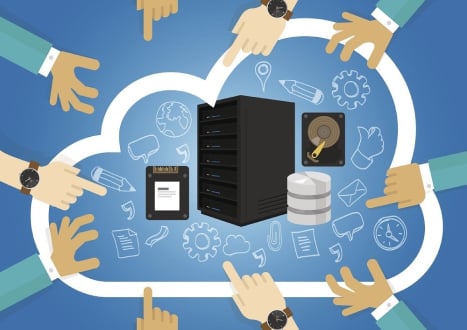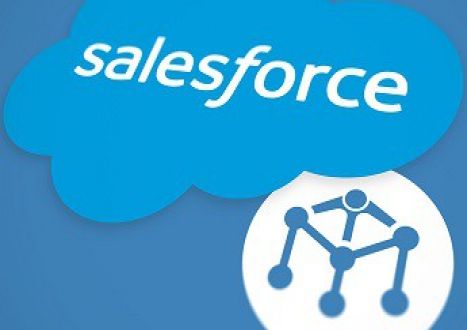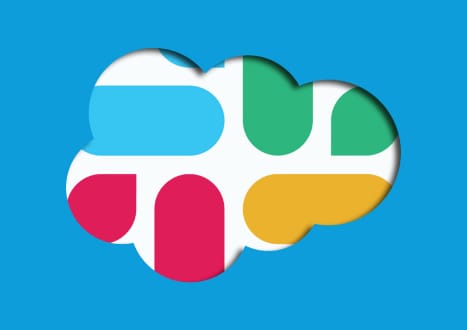- Home
- Video Courses
- Certifications
- Certified Platform App Builder Dumps


Certified Platform App Builder Certification Video Training Course
Certified Platform App Builder Certification Video Training Course includes 169 Lectures which proven in-depth knowledge on all key concepts of the exam. Pass your exam easily and learn everything you need with our Certified Platform App Builder Certification Training Video Course.
Curriculum for Salesforce Certified Platform App Builder Certification Video Training Course










Certified Platform App Builder Certification Video Training Course Info:
The Complete Course from ExamCollection industry leading experts to help you prepare and provides the full 360 solution for self prep including Certified Platform App Builder Certification Video Training Course, Practice Test Questions and Answers, Study Guide & Exam Dumps.
2 – Salesforce Fundamentals
6. AppExchange Sample Exam Question #3 from Study Guide
We're going to walk through one of the sample exam questions from the study guide I've got open, the Platform a Builder study guide, also commonly referred to as the certification exam guide. This is for the Salesforce certified platform App Builder, as you can see. I have the Winter 17 exam guide. And so there are three major releases each year by Salesforce, in the winter, spring, and summer. And so this is the Winter 2017 release that this certification exam guide is good for. So for the exam guide, I've got that linked in the resources section of this lecture. But going through the contents here, the sample exam questions are ones that Salesforce makes publicly available. And so I wanted to at least talk through these at least.I don't want to share any actual exam questions. But I want to share with you and walk you through these different questions so you get a flavour of the types of questions you'll be facing on the exam and also learn how to understand what the right answer is. For instance. and how to approach questions. and even some of the nuances in terms of how they word questions on the exam. And so, scrolling down to the sample exam questions, there are five in this exam guide, and we're going to have individual lectures in this course related to each of these questions. Now, I'm not going to go in order on these questions because I want to cover these in a logical progression as far as what you're ready for. And so bear in mind that we've just gone through the process of downloading apps from the App Exchange. It makes sense to look at the sample exam question related to the App Exchange now. So that would be exam question number three or sample exam question number three from the exam guide for the certification. So that reads: Universal Containers has limited in-house development resources but would like to support online payment processing for its products. And so Universal Containers is a fictional company that Salesforce refers to a lot. It's a shipping company or a shipping container company, and it's a fictional company that they have for a lot of their scenario-based questions on their exams. So if you see Universal Containers as a fictional company that Salesforce is referring to in a scenario based on these questions, in this particular question, and you see the answers, I probably should go through those first before just coming right out and seeing what the answer is. But here's one thing to really highlight. Choose one answer. So on the actual exam, you'll be prompted to select either one, two, or three answers. And so you've got to select the correct number of answers. So for instance, if three of the four answers are correct and they're saying "choose three correct answers," if you only get two right and miss the third option, you'll miss the entire question. So you don't get partial credit for questions. Either you hit it or you missed it; either you got it or you didn't. So the potential answers here would be to configureprice books, products and payment schedules to enable thiscapability, and bearing in mind that they're looking tosupport online payment processing for their products, but theyhave limited inhouse development resources. Option B would be to work with developers to develop custom code for payment processing. C would be configured as outbound messaging to send a message to an external payment gateway. And then D is to install an AppExchange product that would provide payment gateway processing. And so really, as I think about these answers, all of them are possibly correct. You could, if you so chose, configure pricebooks, products, and payment schedules, and you would be well on your way towards providing online payment processing and supporting that for Universal containers. You could as well then for the programmatic sideof things for processing payments, you can work withdevelopers to develop custom code for this payment processing. So these are both partially right. And then, as well, you could configure an outbound message from Salesforce to send a message to an external payment gateway that would be an external system. And we'll deal with outbound messaging more when we're talking about workflow action specifically in this course. But that is another functionality where you could send a message out of Salesforce and it would talk to another system, but it's not quite there. And then the fourth one is that you could simply install an app exchange product to provide payment gateway processing. And so what they're getting at here is that one of the core things as it relates to the app exchange on the platform, a Builder certification exam, is something they just want to know, and when I say that, I mean Salesforce. They want to know if you understand the use case for leveraging the app exchange. And so I really want to highlight thekey phrase here in this question is thatUniversal Containers has limited in house development resources. So, as the clock ticks down and you're taking the exam, you see something about supporting online payment processing and think, "Oh my goodness, I've never dealt with online payment processing before." Products are then those opportunities. Is that a custom product object? It's very easy to become distracted while taking the test, especially if the time is ticking away and you're not feeling particularly confident. So first of all, the first point when taking the exam is to chill. You've got to relax. You want to be well rested because you're going to be in that chair for an hour and a half and you've got to pass this thing, okay? And you can. But these are the ways that you end up shooting yourself in the foot while taking the exam: you start to panic or you're not feeling well or well rested. Cramming too much information all night or something crazy So the key here, and this is how many of these questions are phrased, is to take a step back and look at it as a whole and not become discouraged when all of these answers seemed correct at first blush because, in a way, they are. But when you take a step back and take a higher-level view of the question and you see, oh, Universal Containers has limited in-house development resources, so they're not going to be able to do some of this, that really rules out a lot of these. And so I've seen variations of this question relating to a lack of time or a combination of a lack of development resources and/or being on a tight production schedule, and so it's some really large project or big undertaking with a lack of time to complete it. So the key here for this sample exam question is to hone in on the purpose of the App Exchange. And as a reminder, the App Exchange is the App Store for the Salesforce platform, and that is to provide you with extensible applications and components to further customise your own Salesforce instance to save time and money. If you bear that in mind, you'll do fine as it relates to the App Exchange-related question or questions on the exam for the platform App Builder certification. And, hopefully, you will take these helpful suggestions to heart in terms of taking a step back, relaxing, looking at the big picture for the question, and looking for any nuances in the wording. And this is difficult sometimes, but reallyhoning in on the key phrase. So next I want to show you how to reset your security token. It's something that you're going to learn later in this course. It is a helpful practise activity for you, and that will then round out the section for the salesforce five.
7. Helpful Practice Activity – Resetting Your Security Token
Reset your security token in Lighting Experience and then also show you how to do the same in Salesforce's classic interface. And so a security token is something you'll need if you're going to be using the data loader, which we'll get into later on in this course. But I consider this part of the fundamentals of the platform. The security token is just an extra layer of security that Salesforce uses in order to authenticate you as an authenticated user on the platform through various third-party tools such as the data loader. And so if I do a search and set up, I'm in the setup menu here, as you can see from the set-up home screen and lining experience. If I search for the Word token, I don't find it here in the setup menu, and that's because it's under my own personal information. So I click my icon here and go to my own personal settings and click the Settings link that brings up my personal information screen. And so you notice right below the Personal Information link that there's a link to reset my security tokens. I'm going to click on that as well. It is searchable from the menu here. So this is a separate menu from the Setup menu, and it's your Personal Information menu, which can be accessed by clicking the icon and then selecting Settings. When you first sign up for your free Salesforce account, you get your username and your password all set. But you don't have a security token. You don't get that email to you.So in order to get a security token, you need to click Reset Security Token, and then that will be emailed to you. Once you've clicked Reset Security Token, you'll receive an email from Salesforce, and it will contain your security token. It is a long string of characters, and you'll want to save that somewhere because you'll need it later. So we finished up the fundamental section of this course, and we've covered all the core concepts that should be reflected on the Platform App Builder certification exam. And so before we finish this section and move onto data modelling and management, we next want to dive into a Salesforce quiz to test your knowledge and retention.
3 - Data Modeling and Management
1. Data Modeling and Management Introduction
Alright guys, now it's time to talk about data modelling and management. That's the next section in the Exam Guide. And if you notice here as well in the Exam Guide, it's weighted at 20%. So this is one of the larger sections of the course. It's pretty extensive; there are a lot of lectures in this, and I wanted to highlight as well in the Exam Guide that you want to really look at these bullet points. Under each section, we've got the pie charts for the wait. but then as well. We just finished the Salesforce Fundamentals section, and some of the fundamentals bullets that you should be familiar with by now are the ability to describe the capabilities of the core CRM objects in the Salesforce schema and then given a scenario. Identify the boundaries of declarative customizations and the use cases for programmatic customizations, then identify common scenarios for extending an application using the App Exchange. So we've covered some of that in the previous section. Some of this will get more in-depth in the following sections as well. So, after we've built these fundamentals and the foundation, we'll be layering on this additional knowledge as we move into data modelling and management. And so be sure to review the bullet points in the Exam Guide for this particular section as you start to branch out into it. Some of the lectures that we're going to be getting into will be ones where we talk about objects. And when I mentioned objects, what I'm talking about are custom objects and standard objects. There are certain standard objects that come out of the box with Salesforce, such as accounts, contacts, and leads. And then there are custom objects that you can create. We'll be creating a multitude of custom objects throughout the span of this course, especially as we're building out our IMDb clone app. And then we'll be doing some things insofar as relating those objects to one another. And then once we get familiar with standard and custom objects, we'll go deeper into the individual fields. And this is where we cover standard fields. And those vary based on the different types of objects that you encounter on Salesforce. And then I'll show you how to create custom fields. And when you create custom fields, you can do things like set history tracking on those fields, so you can keep track of the values that have been entered into records. And then I show you how to create the different types of custom fields that are available. And so I've got individual lectures for each individual type of field, because each one is unique and different. And when I was starting out on the Salesforce platform, I found it difficult to understand, sometimes, the difference between a pick list field and a multisite pick list field, and even the dynamic nature of field dependencies. And so we go into all that in this section as well. I cover date fields, date time fields, geolocation fields, even encrypted fields. I show you how to create all those and how they look from the front end for end users as well as how they behave whenever you enter data into them. We become very familiar with creating all of the various types of fields and then extending field level security for those fields, where you can specify who can even see fields or what profiles can edit fields, for example, and then adding these custom fields to page layouts. Other things that we get into as we go deeper into this section of the course include things such as multiple currencies. If you deal with global currencies and need to expand your salesforce organisation beyond just one currency, I show you how to enable that as well as how to keep those conversion rates up to date on a daily basis by downloading and installing a great AppExchange app that handles that task as well. As well, in this section you'll find that we cover another sample exam question from the Exam Guide, and I walk you through how to approach that and what the right answer is—and even what the wrong answers are and why. We also get into some of the third-party tools that Salesforce provides and that you'll be tested on in this exam, such as the data loader and how to install the data loader, how to log in, and how to append even your security token to the end of your password in order to log in. You'll need to be able to do this in order to export, import, and mass delete data on the Salesforce platform. And you'll be expected to be familiar with the dataloader on the Platform App Builder Exam as well. We even create external objects. We get involved with Heroku a little bit, and so I'm trying to expose you to a lot of the different solutions and functionality on the Salesforce platform that may come up on the exam. And it's always helpful to know what the possibilities are so you have at least some exposure and don't encounter something for the first time while taking the test. That's not a good feeling to have when you're taking your test and you discover something that you've never heard of before. So I try to at least give you some exposure. We really try to key in on the things that I definitely know you'll be tested on. I also show how to export data out of Salesforce and even how to decide what tool would be best for mass exports or imports and data manipulation as well. And then we get more into depth in the schema builder. I show you how to use the schema builder to create objects and fields and do that in a visual way. I also give you practise activities such as creating junction objects. And then finally, we round out this particular section with another quiz, so be sure to take part in that as well. So let's get started, and let's next talk about objects. And we will talk about the difference between standard and custom objects on the Salesforce platform.
2. Let’s Talk About Objects
So let's talk about objects. The beauty of Salesforce is that it is an object-oriented system but doesn't require a lot of coding in order to get things accomplished on the platform. Traditionally, if you wanted to do something in an object-oriented environment, you would look at something like Ruby or Java, some sort of language that requires a lot of coding knowledge. Salesforce has made a name for itself by allowing users, administrators, and developers to do a variety of tasks with a few mouse clicks rather than coding. And a lot of times, that's referred to as being declarative instead of programmatic. But if you just keep in mind that you can do a lot of functionality through clicks rather than code, you get the main idea behind why Salesforce is so powerful. And so in this lecture, we're talking about objects. And what that means is different objects in the backend for Salesforce. And so an object can be something like an account or contact object. And so, when you think about objects, you think about how they relate to one another. For instance, in the case of an account, an account could be any sort of business. An example would be like the Fortune 500 list of companies. Each of these could be, for example, an account in your Salesforce instance. Each instance of Salesforce, when you first get going in your Salesforce.org or organization, has several out-of-the-box standard objects that are common across every Salesforce instance that you'll run into. Some common ones you'll see are accounts, contacts, opportunities, cases, leads, campaigns, activities, products, price books, orders, et cetera, et cetera.And so these standard objects are ones that you will see if you change jobs and go from one company to another. You'll see that those same standard objects are there, such as accounts, and then the other type of object that you'll see are those that are called custom objects. and custom objects are any objects that you create on the platform. And an object can be literally anything that you can imagine. A lot of times, a good candidate for a custom object would be anything that you would normally do in a form, whether that's paper-based or if it's a spreadsheet or any sort of thing like that. A lot of times, those are good candidates for creating a custom object. Some common examples that I've seen across Salesforce organisations for custom objects would be things like survey objects. A lot of times companies want to do surveys of either prospects, people they want to do business with, or even clients that they already have. Many businesses will conduct an annual survey of their customers, and you may have the opportunity to create a survey customer object. Other common custom objects I've seen are feedback and coaching objects. This would be a scenario where managers or supervisors see opportunities for improvement among employees. And so this would be more of an internal record, and sometimes there are some security concerns and some privacy concerns around an employee who has an opportunity for improvement or coaching or whatnot. You could create a custom object around that. These custom objects can then be related to other custom or standard objects in Salesforce, and you can start to branch out from there. So, for instance, that coaching object custom object that I mentioned earlier could be related to either your contact object, which is a standard object, or user object, for instance, or a survey customer object. Both can be related to a contact record in Salesforce, and that contact in turn could be related to an account. So as you can see, you can go several layers deep in this, and there are different ways that you can relate these objects together through fields. We'll go into fields more in another lecture, and it's the same sort of concept in that there are standard fields and then you can create custom fields. As we start to get beyond this foundation of what these objects are and we get into the specifics of the fields and the different field types, hopefully it'll start to make sense as to how you can customise the platform to meet your specific business needs. And as you get experience doing this, you'll be able to then gather requirements from a business owner or your boss or whomever and be able to visualise what needs to be done on the platform and make their vision a reality in the cloud through clicks instead of code.
3. Understanding Standard Objects
So now that we've discussed objects, we're going to dive more deeply into standard objects in this lecture. And so I'm having an enlightening experience, and in the Setup menu, I've done a search for the word object, and it pulls up a few matching results here. What I want to highlight is UnderneathObjects, and Fields is the object manager. And so if you click on that, it brings up the Object Manager. So this is a departure from what you may be used to if you have experience in the Setup menu in Salesforce Classic, which I'll show here momentarily. But this is the list of all objects in your organization. And the way that this is done in the lighting experience is that it has all standard objects and then, as well, any custom objects, which would be denoted by this column here on the very right. And so if I scroll down, you can see the default standard objects that are currently in the free Salesforce account when you first start out. And so the label is the name of the actual object that users see. As a result, Account is the primary first object. And then the API name is also "Account." So a note regarding API names is that there are no spaces in these names. And so Salesforce uses the API name behind the scenes. And you will use this if you refer to these objects in things such as formulas or validation rules. And especially when you deal with code or even VisualForce pages, you'll get into API names. And so the behind-the-scenes name for these objects is the API name. And you notice here, like in "campaign member," there's no space there. And so a lot of times, you will see custom objects that are created. And you may want to put underscores in between the words. In addition, in the following lecture, we'll discuss custom objects and start looking at how the API names will appear with underscore underscore C. So clicking on an object will give you more details about it. So I'm going to visit the Account object. So we're in the object manager for the account. Object? And so these related lists at the top are clickable for fields and relationships. And that's where you can get more details about the different fields on an object. And these are the standard fields that come out of the box with your free Salesforce account. As well, those have field labels and field names. And we'll be getting into standard and custom fields later, but I wanted to show you how the fields are represented on the Account object. And so, scrolling back up, you can see other related lists here, like compact layouts and record types, of which none have been created yet. We'll be going through creating recordtypes on some various objects. If there were any Apex code related to triggers, it would appear here, followed by different page layouts and search layouts that have to do with the user interface. We have a section devoted to that as well. Buttons, links, and actions will be covering all that later as well. And then, as we discussed previously, you can access the schema builder by clicking here and then the down arrows for Create to create either a single user or multiple users. These are more admin-type functions as far as creating users, but you could create a custom object from here, which we'll be doing later, as well as custom tabs, email templates, or workflow processes. So let's get out of this Account object and take a more high-level approach to the Object Manager. And one thing that I wanted to show you is how objects are treated in Salesforce Classic. And so, if you prefer to work in the classic user interface, you can click on your icon here at the top right and then select Switch to Salesforce Classic. Okay, so now I'm in the Salesforce Classic user interface, and so I click Set Up to get to the Setup menu, and then scrolling down, the thing to really highlight as it relates to objects is under the Build menu. There's customise and then there's create in classic. And so at the top is "Customize." That's because if you want to access standard objects or those that come standard with your Salesforce account, you'd go into Customize. And here are the various objects that you can customize. And we see accounts, for instance, leads, contacts, and a lot of other standard fields. The main thing to bear in mind is how different the approaches are from the Lightning experience in Salesforce Classic. So when you're wanting to access standard objects in Salesforce Classic, you want to go into the Customize menu. And then if you want to create custom objects, you go to the Create menu, and then you click on Objects to create a new custom object. So we're going to go back to Customize, and we're going to go to the Accounts object. And so you can see that there are different options for the Account object. So if we go into the account fields, for instance, you see the various fields. These are the standard fields, as you can see here with the field labels and field names. That would be the API names for the standard fields for the account. And then there are a few account custom fields and relationships right out of the box on the account record. And these are some sample custom fields that come with your own free Salesforce account. As a result, you'll notice the underscore underscore C here. So let's go back to the Create menu and see if there are any pre-made custom objects. And there's not. So once again, you can get to the Schema Builder by clicking here in Classic. So returning to Customize and then Accounts, one thing I wanted to mention is the concept of person accounts. While we're talking about how to understand standard objects, I wanted to point out that person accounts are something you can enable in your organization, and it's a decision you don't want to make lightly because once you enable person accounts in your own salesforce organization, there's no turning back. So you would want to establish personal accounts. If you're dealing more with business-to-consumer sales, where you're selling to individuals rather than companies, you may want to consider creating personal accounts, which basically give you the ability to create a contact, which is a person, and then they would have a corresponding account that's just tied to them and a personal account that's named after them. We're not going to go into detail about person accounts, but one thing I'd like to point out, especially now that Salesforce is transitioning from the classic to the lightning experience, is that personal accounts are currently only available in the classic version of Salesforce. I believe there's a beta programme where they're starting to enable user accounts and lighting experiences. This may be a concept that's addressed on the exam, for instance. So I wanted to at least mention person accounts and how availability and Lightning experience are somewhat limited. It's just available in beta. It will become fully available over time, probably. Another thing to keep in mind about person accounts as we try to better understand standard objects is that once you enable them in your organization, you cannot turn them off. Another thing to keep in mind about personal accounts is that some apps from the App Exchange are not supported if your organisation switches to personal accounts. So keep in mind that personal accounts are better for a business-to-consumer model, and they're only available in Salesforce Classic with limited availability via an illuminating beta program. So, if you're interested in setting up your salesforce organisation or an additional free developer account, as well as creating personal accounts, that's outside the scope of this course, and there is help available from Salesforce on how to do so. And then, as well, you can go down the path of setting up like the nonprofit starter pack. If you work in a nonprofit, you'll see persona accounts used frequently in that there are contacts and corresponding accounts created for those contacts. So let's go back to Lightning Experience to round this out. And so one of the other main things to bear in mind when you're understanding standard objects in Salesforce especially in the lighting experience. As I go back to the setup home and search for the word "object," Is it possible that you'll be dealing with an object manager, which has essentially combined standard and custom objects under one umbrella called the object manager? Whereas in Salesforce Classic, You had to go into the customised menu to access standard objects. And then you would access the Create menu and set up Salesforce Classic to create custom objects. And so that's all been combined underneath the Object Manager here. And then in the next lecture, we're going to begin understanding custom objects. And you'll start to see additional custom objects here as we begin to create some custom objects to start rounding out this experience. So stay tuned as we.
Student Feedback
Download Free Salesforce Certified Platform App Builder Practice Test Questions, Salesforce Certified Platform App Builder Exam Dumps
Similar Salesforce Video Courses














Only Registered Members Can Download VCE Files or View Training Courses
Please fill out your email address below in order to Download VCE files or view Training Courses. Registration is Free and Easy - you simply need to provide an email address.
- Trusted By 1.2M IT Certification Candidates Every Month
- VCE Files Simulate Real Exam Environment
- Instant Download After Registration.
Log into your ExamCollection Account
Please Log In to download VCE file or view Training Course
Only registered Examcollection.com members can download vce files or view training courses.





Add Comments
Feel Free to Post Your Comments About EamCollection's Salesforce Certified Platform App Builder Certification Video Training Course which Include Salesforce Certified Platform App Builder Exam Dumps, Practice Test Questions & Answers.